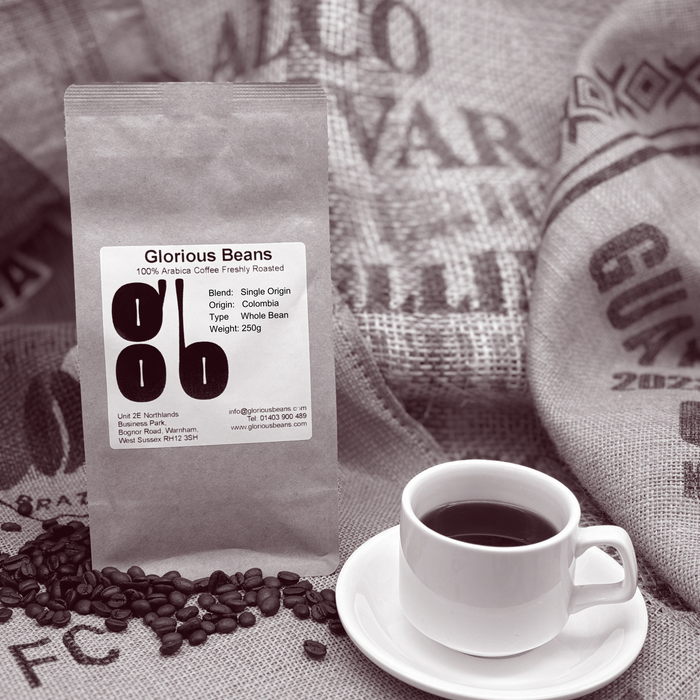Why SOE Single Origin Espresso Is Loved Among Baristas
Why SOE Single Origin Espresso Is Loved Among Baristas
Blog Article
Exploring the Abundant Tastes of Coffee Beans: a Deep Study Coffee and Blended Coffee Beans
When you check out the rich flavors of coffee beans, you reveal an intricate globe where each range brings its own character to your mug. Recognizing the beginnings, processing approaches, and toasting techniques can change your coffee experience. As you navigate with the art of coffee and the imagination behind combined coffees, you'll begin to appreciate the nuances that make each sip special. What you'll find following may transform the method you enjoy your early morning brew.
The Origins of Coffee Beans: Exploring Terroir and Taste Profiles
When you take a sip of coffee, you're not just delighting in a drink; you're experiencing an abundant tapestry of flavors formed by the beans' origins. Each area produces one-of-a-kind flavor profiles influenced by elevation, dirt, and climate. For example, beans from Ethiopia typically burst with brilliant, fruity notes, while those from Colombia tend to use a balanced, nutty sweetness.
As you explore various beginnings, you'll see exactly how terroir-- the ecological elements influencing a plant-- plays an important duty - Single Origin Espresso. The same coffee range can taste drastically various depending on where it's grown
When you think about these variables, you begin to appreciate the complexity behind your mug. Each sip tells a tale of the land and the farmers that supported the beans. Following time you indulge, think regarding the trip your coffee took prior to it reached your hands, and enjoy those detailed flavors that show its origin.
Understanding Espresso: The Art and Science Behind the Brew
When you consider espresso, it's not just regarding the solid taste; it's likewise regarding the strategies that bring it to life. Understanding just how various preparation methods influence taste can transform your brewing experience. Let's explore the details of coffee preparation and uncover the distinct flavor profiles that make each mug unique.
Coffee Prep Work Strategies
Coffee prep work is both a science and an art, integrating exact strategies with a deep understanding of coffee. To begin, you'll intend to choose top quality, newly roasted beans and grind them finely for suitable removal (Single Origin Espresso). The grind dimension is essential; too rugged, and your coffee will be weak, as well fine, and it'll be bitter
The result must be a rich, velvety espresso with an attractive layer of crema on top. With practice, you'll grasp these techniques.
Flavor Accounts Described
The globe of coffee provides an abundant tapestry of flavor profiles that can raise your coffee experience. When you take that very first sip, you'll notice a balance of sweet taste, anger, and level of acidity. Each coffee bean lugs unique notes, from fruity and floral to nutty and chocolaty. Light roasts frequently showcase brilliant level of acidity and lively tastes, while dark roasts existing much deeper, bolder tones.
Comprehending these profiles assists you select the ideal coffee for your taste. Trying out with different blends can reveal unexpected combinations. For circumstances, a well-crafted mix may balance the intense notes of an Ethiopian bean with the rich, chocolatey touches of a Brazilian bean. Accept the journey of discovering coffee's diverse tastes, and you'll transform your coffee routine right into an interesting experience.
Processing Approaches: How They Influence Flavor and Fragrance
While it could seem that the origin of coffee beans is one of the most considerable consider determining their flavor and fragrance, the processing techniques utilized post-harvest play a similarly crucial duty. You'll find that these methods can dramatically alter the last preference profile of your cup.
As an example, the washed process gets rid of the fruit from the beans prior to fermentation, typically resulting in a cleaner, brighter taste. Meanwhile, the all-natural process leaves the fruit undamaged during drying, causing a sweeter, fruitier profile.
Other methods, like honey handling, strike an equilibrium, enabling some fruit mucilage to remain, providing a distinct complexity.
Each handling strategy connects with the beans' integral attributes, improving or muting particular tastes and aromas. When you drink that coffee or blended coffee, keep in mind that the trip from cherry to mug is affected not simply by origin but likewise by just how those beans were processed.
Roasting Methods: Opening the Full Possible of Coffee Beans
Roasting techniques are necessary for disclosing the complete possibility of coffee beans, as read this they change raw, environment-friendly beans right into the fragrant, savory coffee you enjoy. The choice of toasting technique-- light, tool, or dark-- dramatically affects taste accounts.
You can trying out toasting times and temperature levels to discover your ideal brew. A slower roast at lower temperature levels permits for intricate tastes to establish, while a quicker roast can increase anger. Pay focus to the splits throughout toasting; the very first fracture indicates a light roast, while the second split signals a dark roast. By mastering these techniques, you'll disclose a globe of taste, raising your coffee experience to brand-new elevations. Delight in every sip, understanding the care that entered into your cup!
The Magic of Blended Coffee: Creating One-of-a-kind Taste Experiences
Producing an unique flavor experience with blended coffee can change your morning routine into an expedition of taste. By incorporating different beans from various areas, you can expose a symphony of tastes that elevate your mug to new elevations. Each mix deals an unique profile, balancing sweetness, body, and level of acidity to develop something really unique.
When you choose a mix, you're not just selecting a coffee; you're selecting a journey throughout diverse landscapes and cultures. Try out different mixes permits you to discover your personal faves, whether you delight in fruity notes or abundant, chocolatey undertones.

Sampling Notes: Acknowledging the Nuances in Your Mug
As you drink your coffee, you might observe a range of flavors dancing on your palate, each exposing the intricacies of the beans. You may taste the brilliant level of acidity reminiscent of citrus or the deep, abundant notes similar to dark chocolate. The sweet taste can evoke honey or caramel, stabilizing the total profile wonderfully.
Take note of the body of the coffee-- does it feel light and ventilated, or is it complete and velvety? The surface, also, supplies ideas; a sticking around aftertaste may mean nuttiness or flower touches.

Do not neglect to check out the special attributes of different beginnings, click now as each area passes on distinct flavors - Single Origin Espresso. Ethiopian coffees often existing fruity notes, while Colombian beans may display an extra rounded sweet taste. By identifying these subtleties, you'll deepen your appreciation for every cup, elevating your coffee experience to brand-new heights

Developing Approaches: Making Best Use Of Taste Extraction for Every Bean
When you discover the different developing techniques, you'll discover that each strategy can dramatically affect the taste account of your coffee. From French press to pour-over, each method removes different substances, improving or silencing particular notes. Making use of a French press enables oils to remain in the mixture, producing a richer preference, while pour-over highlights quality and brightness.
Temperature and grind dimension also play vital roles. A coarser grind works best for cold mixtures, while a great grind is excellent for espresso. Explore water temperature-- between 195 ° F and 205 ° F-- can disclose hidden tastes, also.
Don't fail to remember concerning steeping time; a fast removal can result in sour notes, while over-extraction might yield resentment. By readjusting these variables, you can maximize taste extraction and genuinely raise your coffee experience. Enjoy the trip of uncovering what technique ideal suits your taste!
Frequently Asked Inquiries
What Is the Suitable Water Temperature for Developing Coffee?
The perfect water temperature level for brewing coffee's in between 195 ° F and 205 ° F. If you use water that's also hot, you'll over-extract tastes; too cool, and you will not remove enough. Go for that sweet spot for the finest brew!
Just How Does Grind Dimension Impact Coffee Taste?
Grind size considerably impacts coffee flavor. Better grinds extract much more flavors and oils, causing a bolder taste, while coarser grinds return a lighter taste. Readjusting grind size aids you attain your wanted coffee account.
Exist Health And Wellness Perks Linked With Alcohol Consumption Coffee?

What Is the Distinction In Between Arabica and Robusta Beans?
Arabica beans are smoother and sweeter, often including fruity tastes, while robusta like this beans are more powerful with a bitter taste and higher caffeine content. You'll notice these differences in fragrance and developing experience.
Exactly How Can I Store Coffee Beans for Freshness?
To save coffee beans for quality, keep them in an airtight container, far from light, moisture, and warmth. If you just grind what you need right prior to brewing., you'll keep their flavor longer.
Discovering the Rich Flavors of Coffee Beans: a Deep Dive Into Coffee and Blended Coffee Beans.
When you explore the abundant tastes of coffee beans, you uncover a complex world where each selection brings its own character to your mug.When you take a sip of coffee, you're not just enjoying a beverage; you're experiencing a rich tapestry of tastes formed by the beans' origins.Roasting strategies are crucial for exposing the complete capacity of coffee beans, as they change raw, eco-friendly beans right into the aromatic, savory coffee you delight in.As you drink your coffee, you might observe a spectrum of flavors dancing on your taste, each exposing the intricacies of the beans.
Report this page